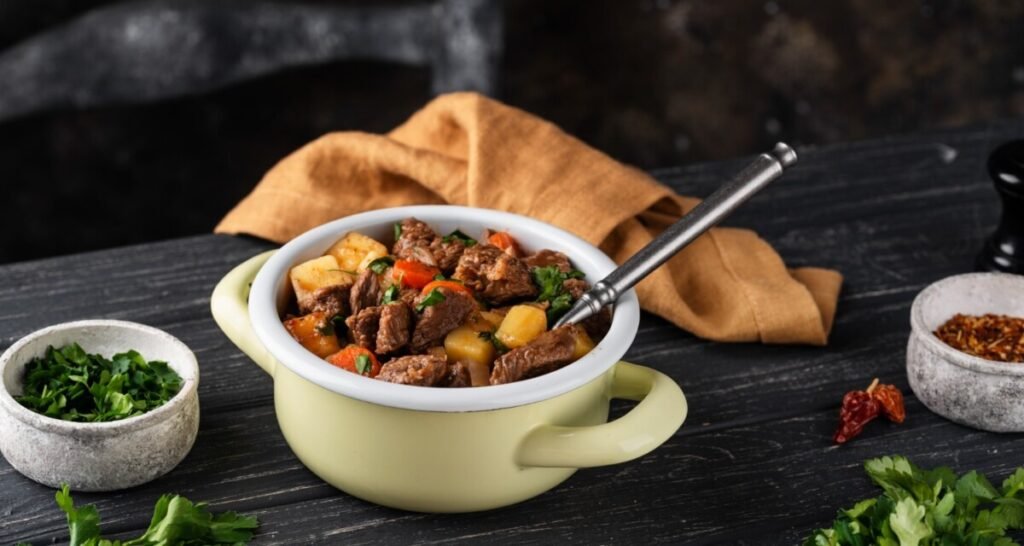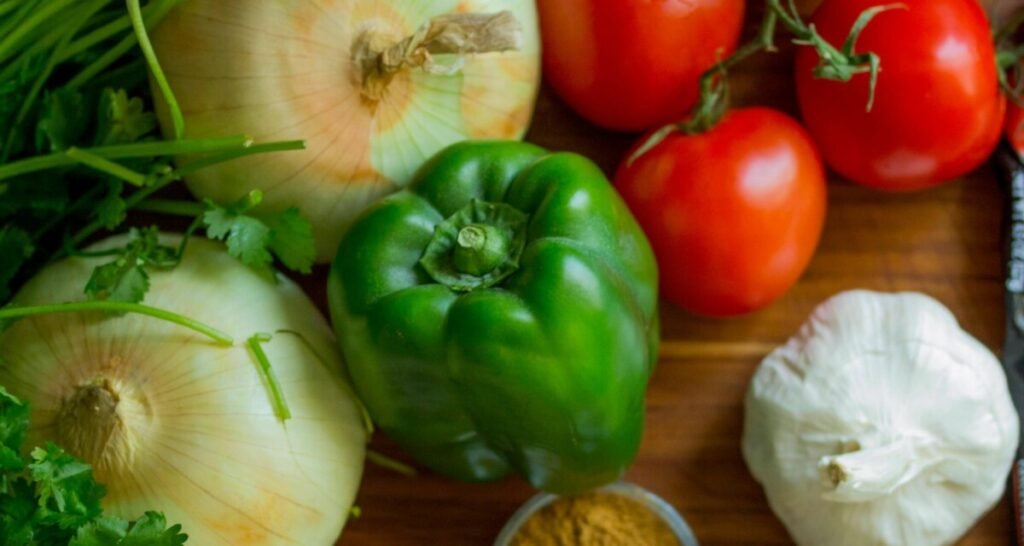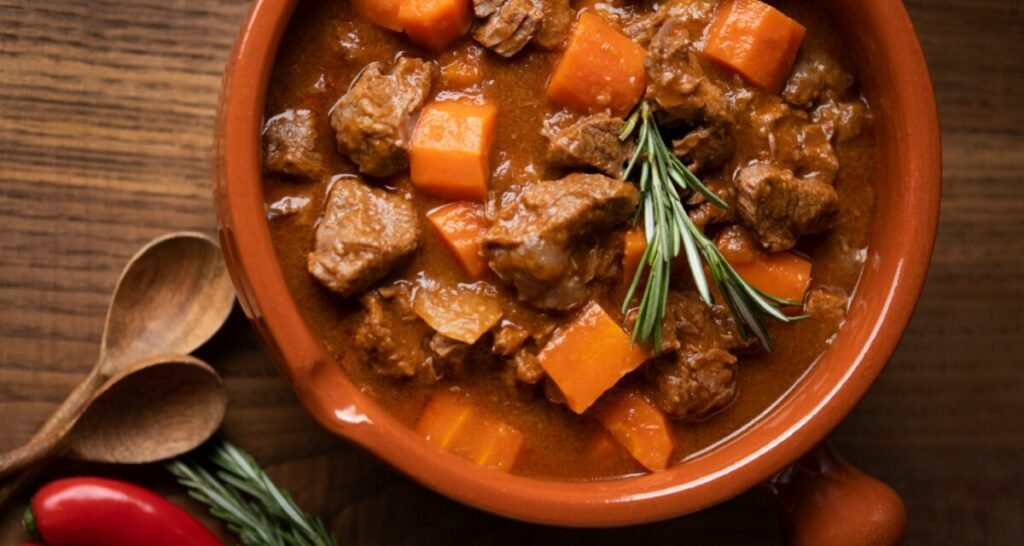Caldo de Res, a savory Mexican beef soup, is a beloved dish that has stood the test of time. Bursting with hearty flavors and packed with nutritious ingredients, this soup is a staple in Mexican cuisine. Whether you’re a seasoned cook or a kitchen novice, preparing Caldo de Res is a rewarding experience that brings a taste of traditional Mexican cooking to your table. In this article, we’ll delve into everything you need to know about this delectable dish, from its history and ingredients to the best preparation tips and serving suggestions. So, let’s get started on this culinary journey and learn how to make the perfect Caldo de Res!
Part 1: Introduction to Caldo de Res
Heading: Introduction to Caldo de Res
Caldo de Res, often known as Mexican beef soup, is more than just a meal; it’s a cultural emblem of warmth and comfort. This dish, rich in both flavor and tradition, is commonly enjoyed across Mexican households and during festive gatherings.
What is Caldo de Res?
Caldo de Res, which literally translates to “beef broth,” is a hearty soup made with beef, a variety of vegetables, and flavorful herbs. The beef, often including bones, contributes a deep, rich flavor to the broth. Originating from Mexico, this soup has been a cherished part of the culinary tradition for generations.
Importance in Mexican Cuisine
In Mexican cuisine, Caldo de Res holds a special place, often served during family gatherings, celebrations, or simply as a comforting meal on a cold day. It’s not just the flavors that make it special, but also the communal aspect of sharing a big pot of soup with loved ones. The process of making this soup is a testament to the care and love that goes into Mexican cooking.
From its humble beginnings to becoming a celebrated dish, Caldo de Res encapsulates the essence of Mexican culinary heritage. Whether you’re looking to recreate a traditional family recipe or trying it for the first time, understanding the cultural significance of this soup enhances the overall experience of enjoying it.

Ingredients and Preparation
Heading: Ingredients for Caldo de Res
To create an authentic Caldo de Res, you’ll need a blend of fresh vegetables, tender beef, and aromatic herbs. These ingredients come together to form a hearty, nourishing soup that’s perfect for any occasion.
Main Ingredients
The backbone of Caldo de Res is its beef, typically including both meat and bones. The bones are crucial as they impart a deep, rich flavor to the broth. Here’s what you’ll need:
- Beef: Use beef shank or short ribs. The bones help to create a rich, flavorful broth.
- Vegetables: Essential veggies include cabbage, potatoes, corn, chayote, carrots, and zucchini. These not only add nutrients but also enhance the soup’s flavor.
- Herbs and Spices: Fresh cilantro, garlic, and onions are key. Season with salt and pepper to taste.
Optional Ingredients
Depending on regional variations or personal preference, you might also add:
- Celery: Adds a slight crunch and enhances the broth’s flavor.
- Tomatoes: For a richer, slightly tangy broth.
- Green beans: Adds a different texture and flavor.
Using fresh, high-quality ingredients will make a noticeable difference in your Caldo de Res. Now, let’s move on to how to put it all together.
Heading: Preparation Steps
Crafting the perfect Caldo de Res involves several steps, each crucial to developing its rich and comforting flavor.
Step-by-Step Guide
- Preparing the Beef:
- Start by rinsing the beef under cold water to remove any bone fragments.
- In a large pot, add the beef and cover with water. Bring it to a boil and then reduce to a simmer. Skim off any foam that forms on the surface.
- Cooking the Beef:
- Allow the beef to simmer for about 1-2 hours until it is tender and the broth is rich and flavorful. This slow cooking process extracts the maximum flavor from the bones.

- Adding Vegetables:
- Add the hardier vegetables like carrots, potatoes, and chayote first, as they take longer to cook.
- After about 20 minutes, add the corn and zucchini. These cook quicker and should retain some texture.
- Seasoning the Soup:
- Add chopped onions, minced garlic, and cilantro. Season with salt and pepper to taste.
- Let the soup simmer for another 20-30 minutes, allowing the flavors to meld together.
Cooking Tips
For an extra flavor boost, sear the beef before boiling. This caramelizes the meat and adds depth to the broth. Additionally, consider adding a touch of lime juice just before serving to brighten the flavors.
Making Caldo de Res can be a bit time-consuming, but the end result is worth every minute spent. The slow simmering process not only ensures tender meat but also develops a broth that’s bursting with flavor.
Nutritional Information
Heading: Nutritional Benefits of Caldo de Res
Caldo de Res is not only a delicious and comforting dish but also has nutritional benefits. Packed with a variety of vegetables and hearty beef, this soup offers numerous health benefits.
Macronutrients
Caldo de Res is a balanced meal, providing a good mix of proteins, fats, and carbohydrates:
- Protein Content: The beef in Caldo de Res is a great source of protein, essential for muscle repair and growth. Protein also helps keep you full and satisfied.
- Fat and Carbohydrate Balance: While the beef provides some healthy fats, the vegetables contribute carbohydrates. This balance ensures you get sustained energy from your meal.
Micronutrients
The variety of vegetables in Caldo de Res contributes a wealth of vitamins and minerals:
- Vitamins and Minerals from Vegetables: Carrots and chayote provide vitamins A and C, essential for immune function and skin health. Corn and potatoes are good sources of fiber and potassium, which are crucial for digestive health and muscle function.
- Health Benefits: The combination of these nutrients makes Caldo de Res a wholesome meal that supports overall health. The bone broth itself is rich in collagen, which is beneficial for joint health.
Incorporating a dish like Caldo de Res into your diet can help you meet your nutritional needs while enjoying a flavorful and satisfying meal. It’s a perfect example of how traditional recipes can be both delicious and nourishing.
Serving Suggestions
Heading: How to Serve Caldo de Res
Once your Caldo de Res is ready, serving it in a traditional and appealing manner can elevate the entire dining experience. Here are some tips to ensure you enjoy this dish to the fullest.
Traditional Accompaniments
Caldo de Res is often served with a variety of side dishes and garnishes that complement its rich flavors:
- Rice: A bowl of fluffy white rice is a common side, providing a nice balance to the hearty soup.
- Tortillas: Warm, soft corn or flour tortillas are perfect for dipping into the broth or making small beef and vegetable tacos.
- Lime Wedges: A squeeze of fresh lime juice adds a refreshing, tangy contrast to the savory soup.
- Salsa: Serve with a spicy salsa or chopped jalapeños for those who enjoy a bit of heat.
- Avocado Slices: Creamy avocado slices can be added on top for extra richness and texture.
Presentation Tips
Serving Caldo de Res can be as much a feast for the eyes as it is for the stomach. Here’s how to present it beautifully:
- Bowls: Use large, deep bowls to serve the soup, ensuring each bowl has a generous portion of beef, vegetables, and broth.
- Garnishing Ideas: Garnish each bowl with a sprig of fresh cilantro and a slice of lime on the side. This not only adds color but also enhances the aroma.
- Serving Utensils: Provide a large spoon and a fork with each bowl, as the soup contains substantial pieces of meat and vegetables that may require cutting.
Caldo de Res is not just about the taste but also the experience of enjoying a traditional, home-cooked meal. These serving suggestions will help you present your soup in a way that’s both authentic and inviting.
Variations of Caldo de Res
Heading: Regional Variations of Caldo de Res
One of the fascinating aspects of Caldo de Res is its versatility. While the basic recipe remains the same, different regions and even families have their own unique twists on this traditional Mexican soup.
Mexican Regional Differences
In Mexico, the ingredients and preparation of Caldo de Res can vary significantly depending on the region:
- Northern Mexico: Here, the soup might include more types of meat, such as oxtail or additional bones, to create a richer broth. The vegetables used are often more robust, with large chunks of carrots and potatoes.
- Central Mexico: In this region, the soup is often lighter, with a focus on fresh herbs like cilantro and vegetables such as zucchini and green beans. Some variations might include a splash of tomato sauce for added depth.
- Southern Mexico: Southern versions of Caldo de Res can be spicier, incorporating regional chili peppers for heat. The broth may also be more seasoned with local spices and herbs.
International Versions
Interestingly, similar beef and vegetable soups exist in other cuisines, influenced by or influencing Caldo de Res:
- Philippines: In Filipino cuisine, there’s a similar soup called “Bulalo,” which also uses beef shanks and marrow bones but typically includes corn, pechay (a type of leafy green), and sometimes fish sauce for seasoning.
- Vietnam: The Vietnamese soup “Pho” shares some similarities, particularly the use of beef bones for broth. However, Pho includes rice noodles and different seasonings such as star anise and cinnamon.
These variations not only highlight the adaptability of Caldo de Res but also its universal appeal. Each version reflects the unique ingredients and culinary traditions of its region.
FAQs about Caldo de Res
Heading: Frequently Asked Questions
To help you master Caldo de Res, we’ve compiled answers to some of the most frequently asked questions. These insights will guide you in perfecting your recipe and making the most of this delicious soup.
What is the difference between Sopa de Res and Caldo de Res?
The terms “Sopa de Res” and “Caldo de Res” are often used interchangeably, but there is a subtle difference. Caldo de Res specifically refers to the broth-based soup made with beef and vegetables, where “caldo” means broth. On the other hand, Sopa de Res can sometimes refer to a beef soup that might include noodles or rice and has a thicker consistency. Essentially, Caldo de Res focuses more on the clear, flavorful broth.
Can Caldo de Res be made in a slow cooker or Instant Pot?
Absolutely! Using a slow cooker or Instant Pot can be a convenient way to prepare Caldo de Res. Here’s how:
- Slow Cooker: Sear the beef in a pan first to enhance flavor, then transfer it to the slow cooker. Add the vegetables and seasonings, cover with water, and cook on low for 8-10 hours or high for 4-6 hours.
- Instant Pot: Use the sauté function to brown the beef directly in the pot. Add the remaining ingredients, set it to the “soup” or “stew” setting, and cook for about 30-40 minutes. Let the pressure release naturally for best results.
How long does Caldo de Res last in the refrigerator?
Caldo de Res can be stored in the refrigerator for up to 3-4 days. Make sure to keep it in an airtight container to maintain its freshness. When reheating, bring the soup to a gentle boil to ensure it’s heated thoroughly.
These FAQs cover some of the most common concerns, helping you to prepare and enjoy Caldo de Res with confidence.
For more tips on healthy and delicious meals, check out this guide on healthy meals for weight loss.

Conclusion
Heading: Conclusion
Caldo de Res is a timeless dish that brings warmth and comfort to any table. Its rich history, nourishing ingredients, and robust flavors make it a standout in Mexican cuisine. Throughout this article, we’ve explored the origins and significance of Caldo de Res, provided a detailed guide on the essential ingredients and preparation steps, and highlighted the nutritional benefits that make this soup a wholesome choice.
We also delved into the best ways to serve Caldo de Res, ensuring that you can present it in a traditional and appealing manner. Additionally, we discussed the various regional and international variations, showcasing the versatility and universal appeal of this beloved dish. Finally, we answered some frequently asked questions to help you perfect your Caldo de Res and enjoy it to the fullest.
Creating Caldo de Res at home is not just about following a recipe; it’s about embracing a piece of Mexican culture and sharing it with your loved ones. Whether you’re making it for the first time or refining a family recipe, the experience of cooking and savoring this soup is immensely rewarding.
So, gather your ingredients, follow the steps, and enjoy the process of making Caldo de Res. With each spoonful, you’ll taste the love and tradition that has made this dish a favorite for generations. Happy cooking!


1 thought on “Authentic Caldo de Res Recipe”
Comments are closed.